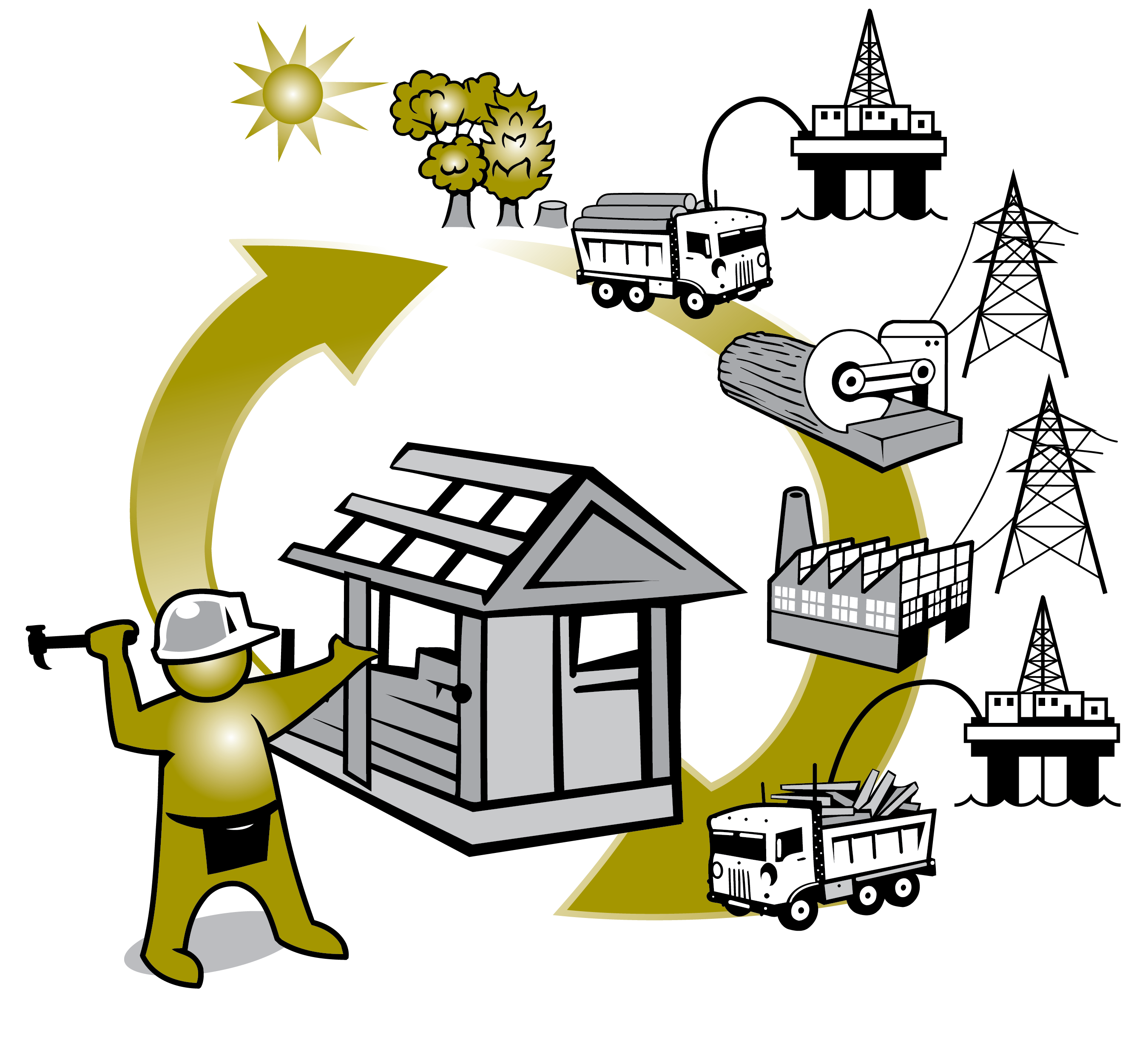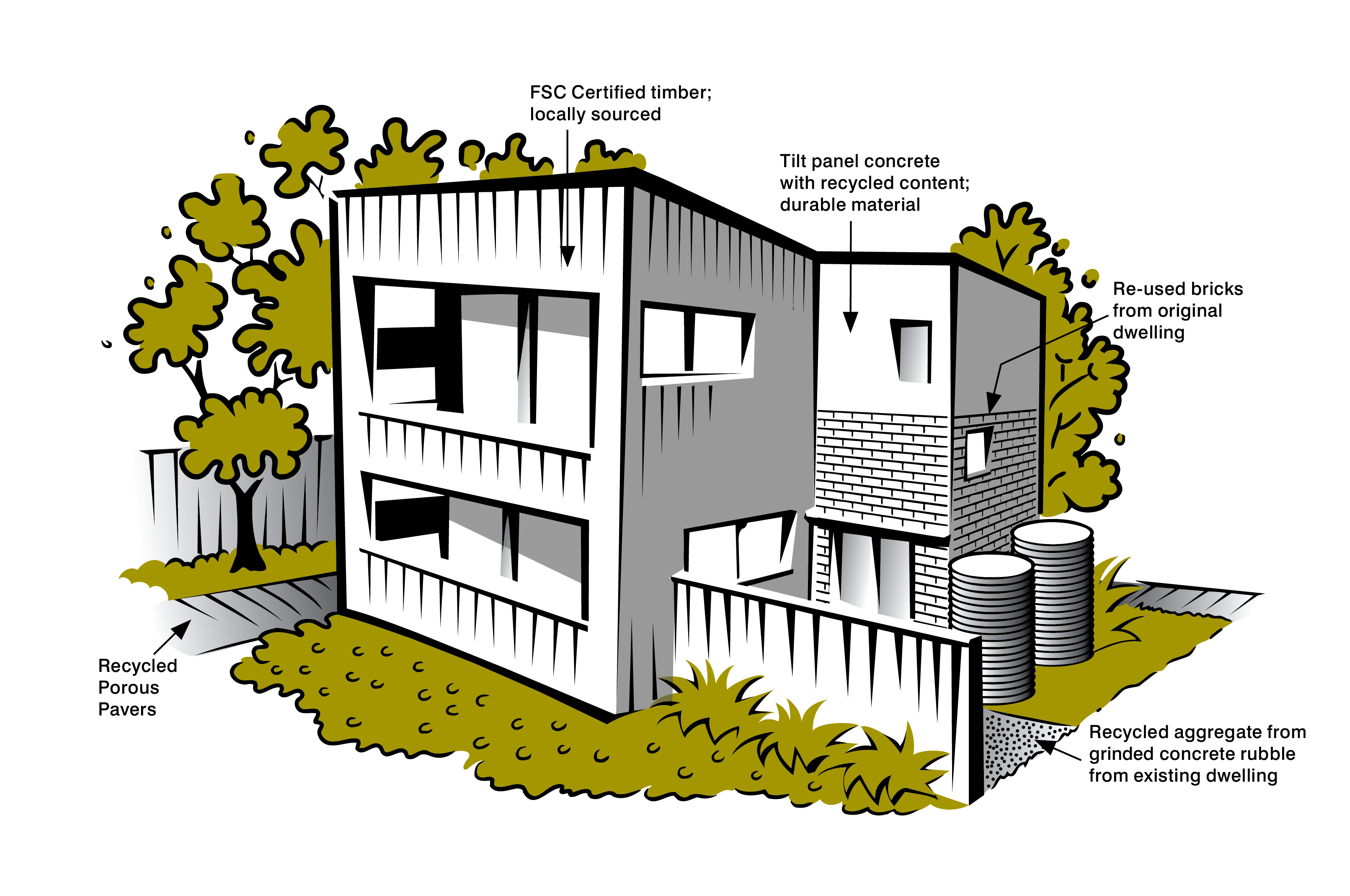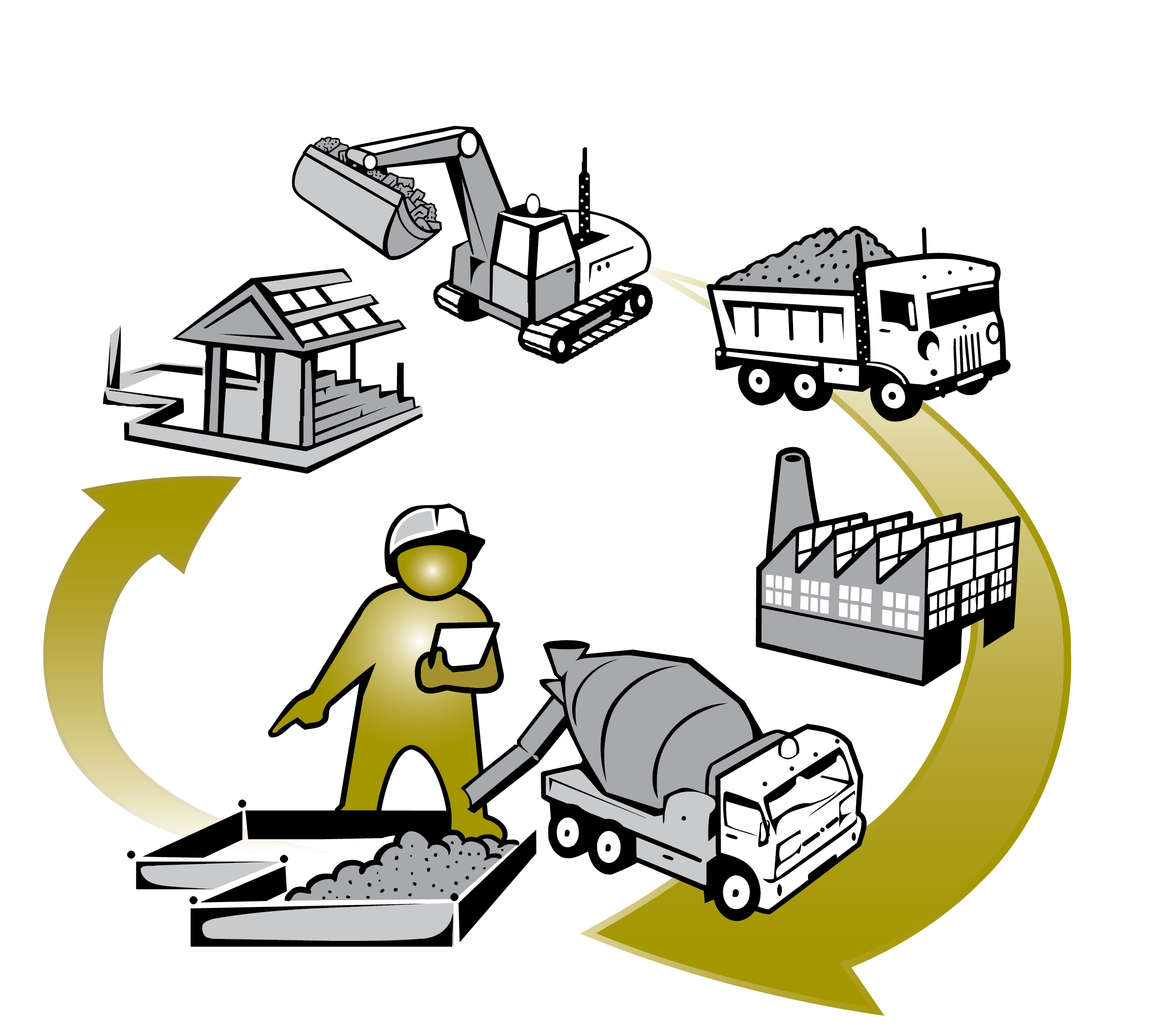#  ) Embodied Carbon
) Embodied Carbon
Version: 1, last updated: 23 Jun 2025
Council's Design Advice
# Council's Design Advice
- Dematerialise the project through a reduction in the quantity of materials required.
- Re-use existing materials where practical.
- Select recycled materials.
- Select low embodied energy materials. Limit or do not use aluminium, zinc and other high embodied energy materials.
- Select materials with recycled content, e.g. cement products with recycled content.
- Select low maintenance and highly durable materials.
- Design for disassembly. Select a simple palette of materials that can be easily recycled at end of life.
- Offset remaining emissions through accredited local carbon offset schemes.
# Why is embodied carbon so important?
Building construction currently consumes around 50% of raw materials worldwide. Many natural resources and building materials require mining, processing, refining and ultimately manufacturing, transport and delivery before they are utilised in construction. The carbon emissions created during these processes is commonly known as embodied carbon.
Embodied carbon emissions have largely been overlooked historically but contribute around 11% of all global carbon emissions, and are increasing as a proportion of overall emissions.
The embodied carbon of building products varies dramatically. For example, new or virgin aluminium window frames require up to six times more embodied energy than timber window frames to produce.
# What defines embodied carbon?
Embodied carbon means the carbon emissions associated with materials and construction processes throughout the whole lifecycle of a building. This includes emissions associated with the production and transport of building products used on a project, as well as maintenance, repair, replacement, refurbishment and all actions undertaken at the end of a building's life.
Embodied carbon does not include the emissions associated with the operation of a building.
Generally, non-recycled metals contain the highest embodied carbon, followed by plastics and other materials with a high chemical content. Natural construction materials such as timber, brick and render contain the least embodied carbon.
 Have you considered the resources consumed by the products you are using? Are there better alternatives?
Have you considered the resources consumed by the products you are using? Are there better alternatives?
# Design strategies
# Dematerialisation – use less materials
To reduce the embodied carbon of a building structure, the initial focus should be on using less materials (through dematerialisation).
To reduce the amount of material needed, initial choices on scale and the size of buildings are fundamentally important. How can you design a smaller building that still meets the intended needs of the building users? Can a space or room be used for multiple uses? Can the building be changed and adpated easily into different uses in the future?
Carefully consider how to optimise the structural requirements and avoid wasting materials on over-engineering. Modular construction techniques can also assist in reducing costs and construction waste onsite. Even simple design principles like using standard dimensions for walls, windows or roofing can greatly reduce construction timelines as well as the amount of off-cuts and general construction waste generated by a project.
 By making informed choices about materials you can reduce embodied carbon, save money and give materials a new life.
By making informed choices about materials you can reduce embodied carbon, save money and give materials a new life.
This case study project in the City of Yarra has carefully considered the embodied energy of the structure and designed it for disassembly.
# Use retained, reclaimed and repurposed materials
Embodied carbon can be minimised by retaining and re-using existing building structures or by re-using existing materials in the new building. This will extend the material's life span, reduce the amount of waste going to landfill and can also be used as a key design feature of your project.
Composite materials are more difficult to recycle than raw materials. These are best re-used where possible.
Examples of how materials can be re-used or re-purposed within a new development:
- Recycled timber can often be used as new flooring and decking.
- Recycled aggregates or bricks can be used either in building or landscaping structures.
- Crushed hard materials such as bricks and concrete may be re-used as aggregate.
# Use materials with recycled content
Where practical, specifying materials with recycled content is more sustainable compared to new materials, for example:
- Metal produced from post-consumer waste.
- Concrete blends that include a percentage (e.g. 30 percent) of recycled content (cement extender including fly ash or blast furnace slag).
- Concrete that incorporates recycled aggregate.
The sourcing of locally produced, low embodied energy materials and products will also help minimise their impact through reduced transport requirements.
# Use lower carbon materials
Where new materials are required, is there a lower embodied carbon alternative? Can timber (lower embodied carbon) be used structurally instead of concrete or steel (higher embodied carbon)?
Use local suppliers to reduce transportation emissions and support local economies. Avoid materials that require air freighting from overseas, these can also be expensive and slow down construction timeframes.
Is there a carbon neutral certified version of the product you need? There are a range of construction materials that now have carbon neutral certification, including bricks and concrete. Be sure to look into the details of the product certification to understand what is covered. You may also be able to find and compare Environmental Product Declarations as part of your materials selection.
 Consider recycling when demolishing and building new.
Consider recycling when demolishing and building new.
# Plan for the future: design for disassembly
When building new, design the building components so that they can be easily disassembled. This will enable the future re-use, repurpose and recylability of these materials, ultimately reducing embodied carbon and construction waste on the future project.
Building components, such as facade and roof structures, that are easily disassembled are more likely to be reused than those that would be damaged when taken apart.
A simple materials palette or selection can greatly assist at the building's end of life. Preference construction methods that emphasise mechanical joinery, including bolting, screwing, or nailing. Permanent, chemical methods like binders, sealers, adhesives, or welding can complicate the process of separating and recycling materials in future.
Select non-laminated materials that can be separated and recycled to reduce costs and make demolition waste management easier. Consider natural, plant-based regenerative materials such as compressed straw, hempcrete or bamboo. Can the future waste from these building materials or crushed and recycled or even be composted or chopped into mulch? Avoid toxic materials that may present waste management challenges in the future.
# Offset residual emissions via accredited schemes
Do not rely on carbon offsetting to tackle embodied carbon emissions, rather treat offsets as the 'icing on the cake' of your design strategy. Make sure you use accredited consultants and/or software to calculate your embodied carbon emissions. Consider using a local carbon offsetting fund and initiatives that add value to our local economy.
Ensure fair and transparent reporting on all carbon offsets you select, to make sure you are getting what you pay for.
# Balancing embodied carbon with other factors
Embodied carbon is one criteria for assessing the design and materials in your development – remember that this covers greenhouse gas emissions but not other environmental or social considerations that may also be important.
Other issues to consider include how durable the material is and what maintenance will be required, whether the material is sustainably sourced, whether there are any issues with toxicity, how much water is used in manufacturing, whether the material is produced locally, and whether manufacturing companies meet other ethical standards around fair treatment of workers. Where these factors are in alignment is where the greatest opportunities exist for a sustainable approach to materials.
“ Taking your time when choosing construction materials will allow you to tick as many boxes as possible: aesthetics, durability, insulation, low toxicity, low embodied energy and easy recyclable. ”
# Methods and tools
# Life Cycle Assessment
Life Cycle Assessment (LCA) is an established methodology that assesses the environmental impact of building materials by measuring the amount of resources required at the development, transport and disposal phases of their lifecycle. In other words, a cradle to grave analysis. While Life Cycle Assessment is the most accurate methodology for assessing the environmental impacts of buildings, it is not currently a viable option for small scale individual buildings.
# Environmental product declarations
Environmental Product Declarations (EPDs) are standardised and independently verified documents that provide information about the environmental impact of a product. EPDs are typically used in various industries, including construction, to help people make informed decisions based on the environmental performance of products.
EPDs are based on Life Cycle Assessment (LCA) methodologies, which evaluate the environmental impacts of a product from its raw material extraction to its disposal. EPDs can be considered when choosing the right building materials to include on your project.
# Certified timber
The high demand for wood products worldwide has led to large-scale illegal and unsustainable logging practices in some countries. Timber products specified for a building development should be sourced from renewable resources.
When specifying timber, ensure that it is certified through an accredited forest certification scheme such as the Forest Stewardship Council (FSC), or the Australian Forest Certification Scheme (AFCS) now known as Responsible Wood and recognised through the Program for Endorsement of Forest Certification (PEFC).
# Third party certification
Many materials and products that claim to be "environmentally friendly", "green" or "sustainable" often do not live up to their claim. The most effective way to choose a sustainable product or material is to check for certification under a recognised standard such as ISO (International Organisation for Standardization) 14000 Environmental Management and ISO 9000 Quality Management. Choosing a material or product with either certification will ensure that production processes have been conducted to satisfy the requirements set out in the standard. In the case of ISO 9000, the quality and management systems of the supplier has been assessed independently by a third party to ensure that the standards have been met.
When specific information about a material is not available you should investigate the base materials to get an understanding of their production processes.
# Climate Active certification
Climate Active is the Australian Government's carbon neutral certification scheme. Categories of the Climate Active Carbon Neutral Standard are:
- Organisations
- Products and Services
- Events
- Buildings
- Precincts
Products that are certified through Climate Active have to conduct a life cycle assessment. They also must take steps to reduce emissions through their manufacturing processes. Offsetting of residual emissions is allowed under the Climate Active certification standard.
# The Living Building Challenge (LBC)
The Living Building Challenge is the built environment's most rigorous performance standard developed by the Living Futures Institute. It calls for all building projects at all scales to operate as cleanly, beautifully and efficiently as nature's architecture. The International Living Future Institute offer an international zero carbon certification. The certification is for individual buildings and combines requirements for embodied carbon as well as operational carbon.
# Find out more
- Climate Active (opens new window)
- Living Future Institute Net Zero Carbon Certification (opens new window)
DISCLAIMER: This Fact Sheet has been created for general information purposes only. While the Fact Sheet has been created with all due care, no warranty is given as to its suitability for any particular purpose and users should obtain their own advice relevant to their situation and specific needs. MAV or any party authorised by MAV to reproduce the Fact Sheet is not responsible for the accuracy, currency or reliability of the Fact Sheet and accepts no liability for any damage, losses whether direct or indirect, claims or expenses howsoever arising from any party who may rely on its contents.
The Council Alliance of a Sustainable Built Environment (CASBE) maintains these Sustainable Design fact sheets on behalf of our member councils. (opens new window)
CASBE is supported by the Municipal Association of Victoria (MAV).
We acknowledge – the Cities of Yarra, Port Phillip, Melbourne, Stonnington and Maribyrnong – for their leadership in producing the original suite of Sustainable Design fact sheets
Copyright © Municipal Association of Victoria 2025